Just a little longer and Van der Lugt Lisianthus can, next to the six-hectare new building at their new location in Monster, start collecting rainwater in a freshly made basin. Van Daalen Grond-, Weg- en Waterbouw recently completed a 10,000 cubic meter basin, so that the basin is simultaneously finished with the glazing of the greenhouse. "In this way, from that moment on, the grower collects any rain that falls even before having a demand for water," Dirk-Jan van Daalen explains during a tour of the construction site.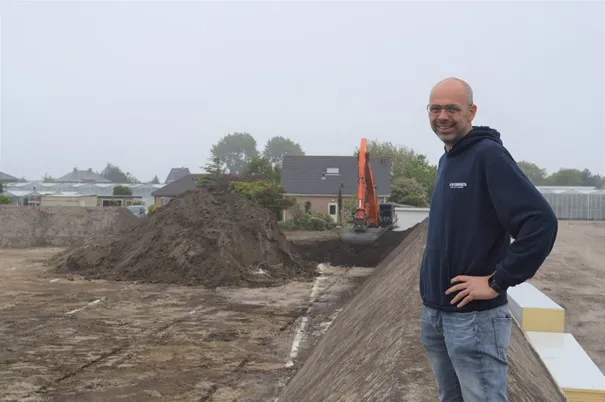
Dirk-Jan with the last digging work in the background
Since February, the characteristic, orange machinery of Van Daalen GWW can be found at the Molenweg in Monster. “For more and more projects in which we are involved, we are asked to take care of the complete package, from site preparation, excavation work for pipelines to creating basins and finishing the infrastructure for a company. We can then apply all elements of our profession in which we are proficient and that we enjoy.”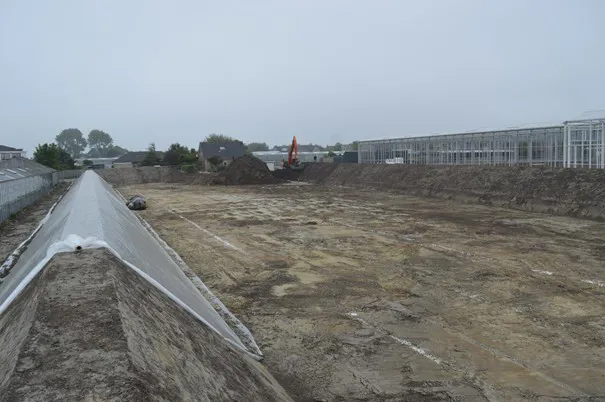
A start was made on 1 February with preparing the entire plot for construction. Quite a job, not least because of the large amount of several small gardens that used to occupy the plot. “The entire plot has been leveled, waterways filled in and paving removed, so that there now is a nice uniform cultivation layer without debris in it. We were able to deliver the site ready for construction on 1 March, despite the fact that it was quite wet in early February. Two dry weeks at the end of the month were quite helpful."
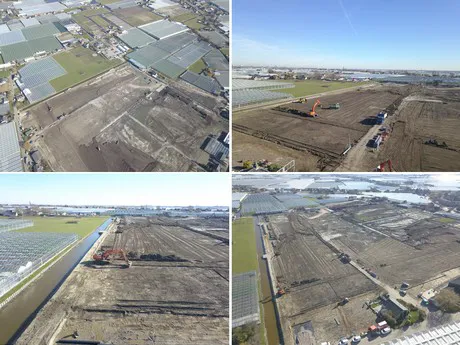
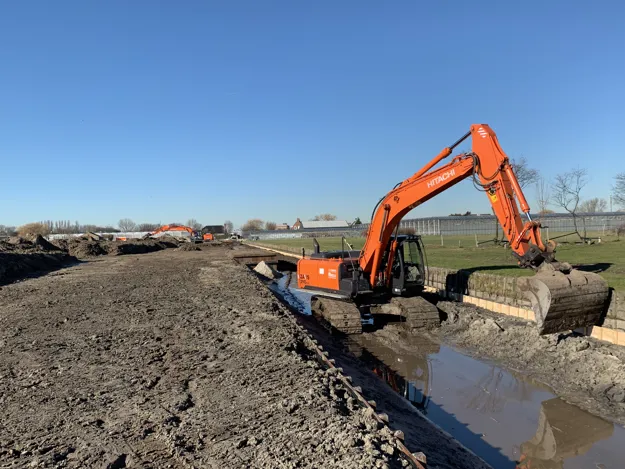
A nearby ditch was then widened because ditches elsewhere had to give way due to the restructuring of the plot. Then it was time for the basin, or actually the basins. Van der Lugt Lisianthus is getting two. One of 10,000 cubic meters and one of 7,000 cubic meters. This gives the grower sufficient water storage and room for maneuvering in the event of an emergency.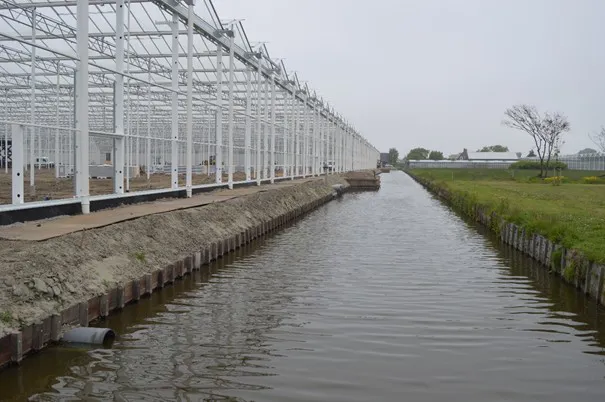
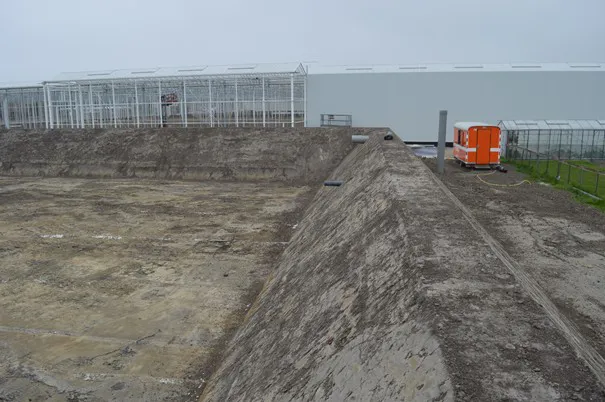
If you look closely, you will see a black pipe that will serve as a drain valve for Rainlevelr and gray pipes in the corner for the overflow. The inlets will be mounted when the foil is applied.
Both basins are connected to a connecting pipe, so that the water level in the two basins remains the same. To make that 'leveling' possible, the levees of both basins must be equally high and the bottoms as deep. Because the basins are not the same size, it required a lot of calculation and drawing work before they were able to dig. "Fortunately, these days we are designing at an early stage with all parties involved and we first draw everything in 3D-GPS so that problems are prevented and we can keep going nicely."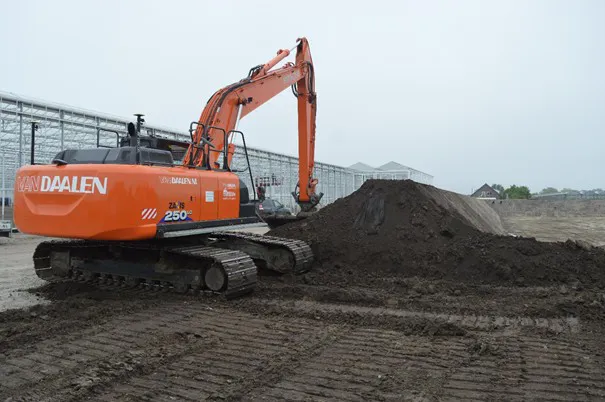
Part of the excavation can also consist of pre-loading the soil. “In our work you always have to know what type of underground you are dealing with. With as example a basin; putting a very high levee on a weak soil makes no sense. Pre-loading for a good compaction is then a solution. You do not want the levee to sink after digging and profiling. The annoying thing is that that settlement is often not the same everywhere. If that happens, the entire basin is immediately out of balance. You don't want that. Here in Monster, we have a good underground and pre-loading was not necessary."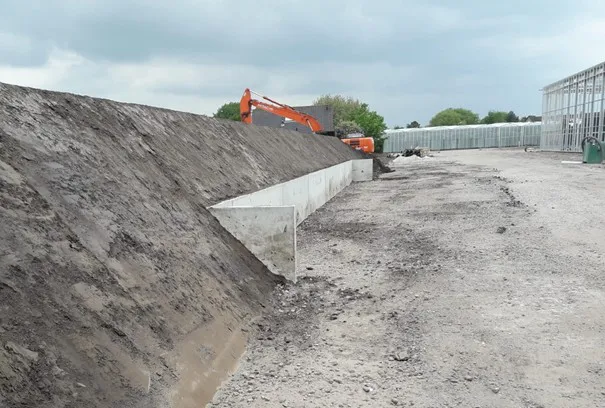
The basin at Van der Lugt also has a smart detail: a retaining wall has been installed in the basin. “Here, cultivation soil can be stored periodically and scooped up with a shovel, without damaging the basin. The construction of basins is really a specialism, and this also involves creative things like this. It is best when the grower leaves things more or less to us. We can really free him completely from worries and make something that is affordable and that he or she is comfortable with for about fifteen years.”
As soon as one basin is finished, the next basin can be started with. But not before the lining on the largest basin has been installed. That lining is already tailor-made in advance. "An advantage of working with great precision in 3D," Dirk-Jan explains. Finally, paving and asphalt must be installed on the plot. "Only then can we really make it tidy for Van der Lugt," Dirk-Jan concludes.
For more information:
Van Daalen Grond-, Weg- en Waterbouw
www.vandaalen.nl
info@vandaalen.nl
Dirk-Jan van Daalen
dj@vandaalen.nl
+31 (0)6 2248 3767
